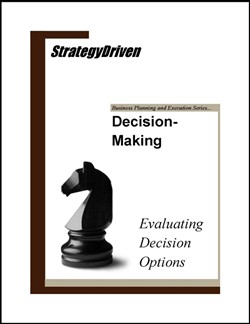Decision-Making Best Practice 12 – Diverse, Redundant Data Sources

Hi there! Gain access to this article with a StrategyDriven Insights Library – Total Access subscription or buy access to the article itself.
| Subscribe to the StrategyDriven Insights Library
Sign-up now for your StrategyDriven Insights Library – Total Access subscription for as low as $15 / month (paid annually). Not sure? Click here to learn more. |
Buy the Article
Don’t need a subscription? Buy access to Decision-Making Best Practice 12 – Diverse, Redundant Data Sources for just $2! |

 Transparency motivates. Transparency shapes. Transparency drives. Decisions made in full view of those who would provide critical judgment – shareholders, regulators, employees, and the public – provides a powerfully strong guiding force that demands decision-makers fully vet the business and ethical implications of each option and soundly support their ultimate selection. Not every decision can or should be made in the public view. However, every decision-maker can challenge their team and themselves with the question, How would this decision read as a New York Times front page headline?
Transparency motivates. Transparency shapes. Transparency drives. Decisions made in full view of those who would provide critical judgment – shareholders, regulators, employees, and the public – provides a powerfully strong guiding force that demands decision-makers fully vet the business and ethical implications of each option and soundly support their ultimate selection. Not every decision can or should be made in the public view. However, every decision-maker can challenge their team and themselves with the question, How would this decision read as a New York Times front page headline? Decisions, both large and small, define an organization, its culture, its direction, its public image, and ultimately its success or failure. Each decision and the process of making and executing on it provide all those involved with a new experience from which to draw upon when making future selections. Organizations, however, are living things; people come and go, memories fade, and circumstances change. Therefore, in order to fully benefit from the hard won and often expensive experience gained through decision-making, a mechanism must be in place to gather, assess, and then make available these lessons learned.
Decisions, both large and small, define an organization, its culture, its direction, its public image, and ultimately its success or failure. Each decision and the process of making and executing on it provide all those involved with a new experience from which to draw upon when making future selections. Organizations, however, are living things; people come and go, memories fade, and circumstances change. Therefore, in order to fully benefit from the hard won and often expensive experience gained through decision-making, a mechanism must be in place to gather, assess, and then make available these lessons learned.
